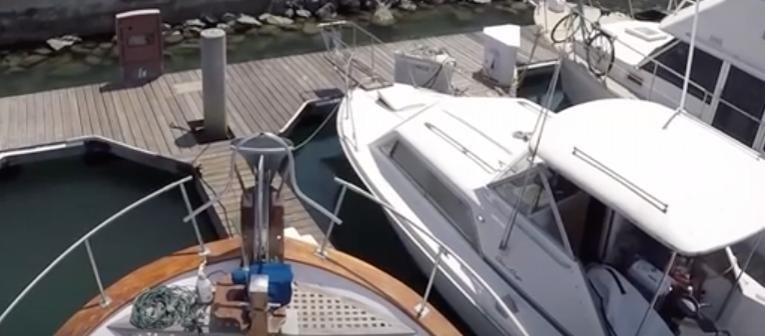Docking with severe cross current and same cross wind is difficult no matter what.
Especially to a narrow dock.
There are many variables in a single approach that can challenge the best boat handlers.
At any given moment, wind speed or tidal flow can vary, where I am it often does and varies a lot. Often the wing is gusty or turbulent, not nice and steady. Either of these can constantly require tweaking of your crab if coming in straight for some distance.
Then there is usually the diminishing current as you enter the slip, which will have a large effect on single engine trawlers with a full keel as they are very shallow forward and very deep aft usually. This means the second you start entering the slip, the boat naturally twists, srern downstream.
There almost always are several techniques that can help you successfully dock, but slipping in the narrow slip without touching snything, in togh conditions, won't happen every time, no matter how good you are. Many if not all the best boat handlers I know can't do it.
When the current and wind are really ripping, the only approach I am comfy with is.....
I use the common thought that many vessels pivot when turning on a point about 1/3 of the way aft from the bow. I stay pretty close to the side I am turning into and make bare steerage way. When the bow to that 1/3 point gets near my slip (and only practice will tell you when), I go hard over on the wheel and give the boat some power. Again, only practice and estimating the wind and current can tell you how much.
By doing this, every movement is as slow as you can be, the time outside the slip is minimized so the time the forces can act on you is minimized thus less to guess. Also if something goes wrong, there is the least amount t of distance for those forces to act upon you and gain momentum prior to hitting something.
As I said, other ways are posdible, but will probably need more power and speed. They can be your friends or enemies. If controlled perfectly, a docking can look easy, if not, you hit things faster and harder. That's why I take the chicken way out, not as impressive as acfast, clean entry....but less spectacular if I dont time something just right.
So in all....my approach ideally would look like an approach with an after bow spring. I would use one if I could, but if not, this is using the wind and current to hold my bow somewhat like a spring while the natural pivot point allows a smooth quick turn into the slip. Easier said than done.



